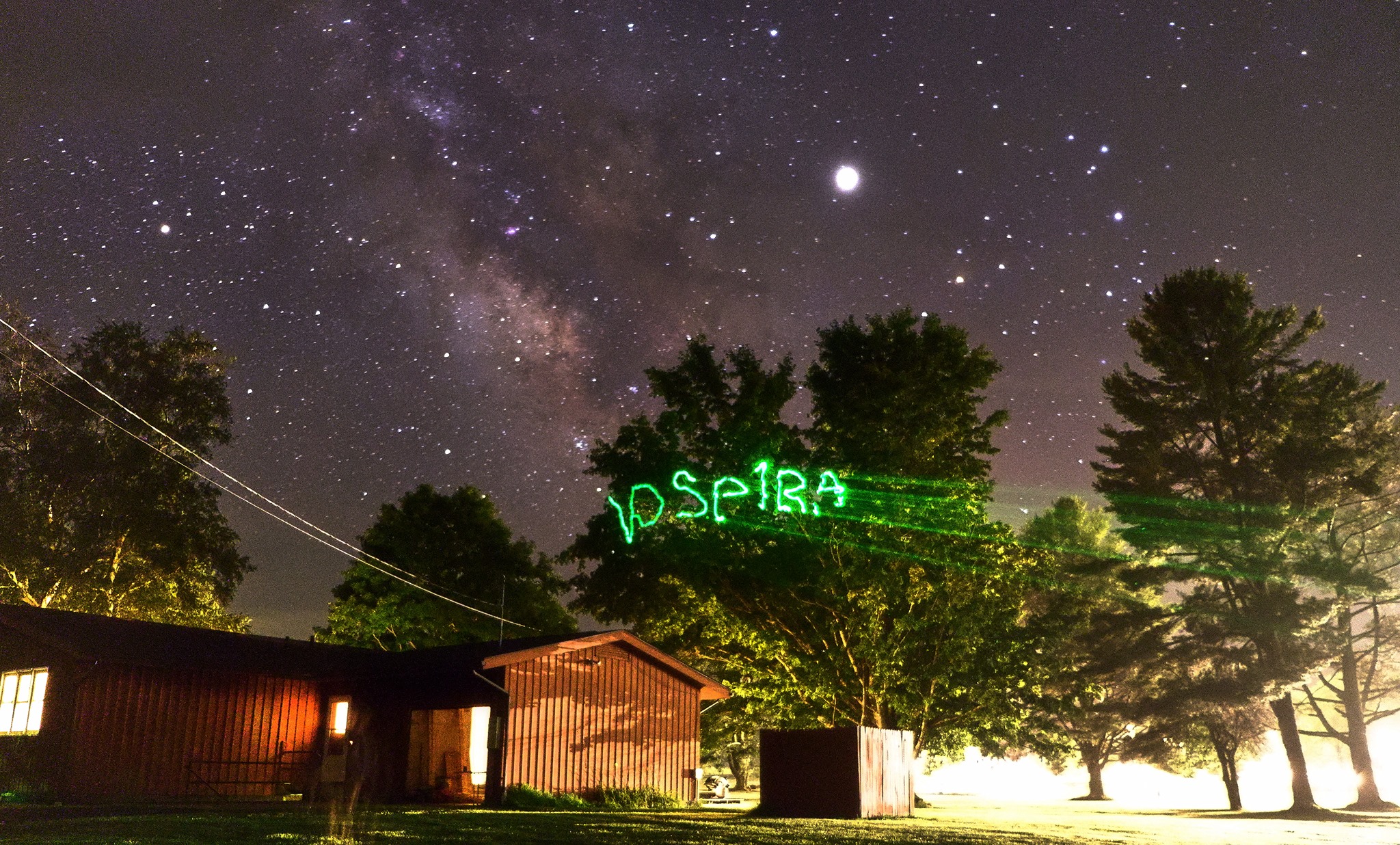
DSPIRA Summer Session - July 2019 - Green Bank, West Virginia
At the heart of the DSPIRA Experience is the development of the Radio Horn Telescope. It is truly amazing that we can built a low cost device that can reveals secrets from Radio Waves in space. However, like a starter telescope purchased at a department store can’t see all the wonders that the Hubble Space Telescope can, the DSPIRA Horn Telescope will only be able to detect the brightest radio sources.
It turns that the brightest radio source is the Milky Way Galaxy, and that is what the DSPIRA Horn Telescope will be detecting, so this little activity/lesson sequence will introduce the Milky Way and lead us to what the radio waves will reveal.
Click here for a complete document of Teacher’s Notes for this whole activity sequence
Activity List
- How Fast Are We Moving?
- Celestial Coordinate Systems
- Using Stellarium to Find the Galactic Center
- Introduction to the Milky Way - What can we see?
- Introduction to the Milky Way - What CAN’T we see?
- A Model of the Motion within the Milky Way
- Creating a Velocity Curve for the Milky Way Galaxy
1. How Fast Are We Moving?
This activity may have already been done as a stand alone, or as part of the Earth’s Motion sequence. It does have the students determine the speed of the Sun around the Milky Way, so they can do it now, or recall the value from earlier work.
> Click for link to How Fast Are We Moving? page
2. Understanding Celestial Coordinate Systems
If the students are heading towards making observations from their location, a basic lesson of coordinate systems is needed. Galactic Coordinates are covered here.
This, too, is a separate stand alone lesson within this DSPIRA space.
> Click for link to Understanding Celestial Coordinates page
3. Using Stellarium to Find the Galactic Center
This is more closely related to the Earth Motion Lesson sequence, but would be a good starter for making observations in the sky.
STELLARIUM NOTE: First off, Stellarium is not the only planetarium software available, but it is the one that was used with the DSPIRA Teacher program, and the one being utilized with these activities.
USE DOWNLOAD VERSION If you are at this point investigating the Milky Way with the Horn Telescope (or at least heading in that direction) You should have a few versions downloaded on computers you intend on using. It will make the student’s observation planning much easier.
Video (to be created) - Planning for a Horn Telescope Observation - From choosing an object to pointing the Horn at it
> Click here for Student Activity Document
4. Introduction to the Milky Way - What can we see?
Just a basic chance for the students to get basic information about the Milky Way off the internet. There is also a first pass at understanding the Galactic Coordinate system used for studying the Milky Way.
> Click here for Student Activity Document
5. Introduction to the Milky Way - What CAN’T we see?
The name is hopefully not misleading, because there is lots that we can’t see. This activity looks at MOTION as “the thing we can’t see” (without understanding the Doppler Effect)
> Click here for Student Activity Document
> Computer Simulation of Galactic Motion
6. Modeling the Motion of the Milky Way
This is a paper model that allows the students to determine relative radial speeds of stars at locations around the Milky Way Galaxy. A collaborative class effort can produce a model very similar to current research in Milky Way Astronomy
> Click here for all 3 Student documents
—–> Document
—–> Spreadsheet
—–> Model Diagram
Here are 3 helpful video companions
MWG Model - Part 1MWG Model - Part 2MWG Model - Part 3
7. Creating a Velocity Curve for the Milky Way Galaxy
This is a culminating activity that the teachers and students can take on collecting data of the galaxy… If you go back to the Lesson Module Page, there is a complete other lesson sequence to accomplish this.